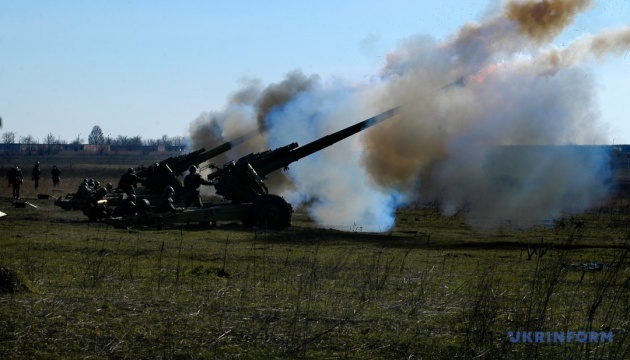
Russia intensifies assault operations in Zaporizhzhia sector – Voloshyn
Russian forces have intensified assault operations in the Zaporizhzhia sector over the past three days.
Vladyslav Voloshyn, spokesperson for Ukraine's Southern Defense Forces, said this in comments to Ukrinform.
"The enemy has amassed certain forces and resources for assault operations, and the number of attacks has now increased. For example, in the Huliaipole sector, there were 16 assaults in a single day, with Russian forces attempting to seize our positions near Rivnopil, Novopil, and Novosilka," Voloshyn said, adding that these attacks were supported by aircraft.
Additionally, nine assaults were recorded in the Orikhiv sector, near Mali Shcherbaky, Stepove, Lobkove, and Shcherbaky. Russian aircraft struck Ukrainian positions near Kamianske, Komyshuvakha, and Novoandriivka.
Voloshyn noted that while there had been a brief lull a few days earlier as Russian forces regrouped, this did not apply to airstrikes or MLRS attacks.
According to him, Russian forces launch around 15 guided aerial bombs per day on Ukrainian positions and near frontline settlements. Over the past few days, the enemy has also been firing nearly 100 unguided aerial rockets per day.
"Currently, we are witnessing about 300 artillery attacks per day, using nearly 1,300 shells. In addition, there are approximately 450 kamikaze drone strikes and over 300 aerial munition drops daily. This is the level of enemy firepower at the moment," Voloshyn said.
He stressed that Russian casualties have increased significantly compared to February.
"The enemy is suffering heavy losses. In the past 24 hours alone, they lost 189 personnel. Since the beginning of spring, Russian forces in the south have lost nearly 3,000 troops, which is significantly higher than in February. Additionally, yesterday alone, Russian forces lost 15 artillery systems, including self-propelled guns, as well as 30 vehicles and armored units. In total, this month, they have lost nearly 250 vehicles and armored units," Voloshyn said.
Russian troops heavily rely on light vehicles such as motorcycles, buggies, and ATVs for small-group infantry assaults.
"Just today, Russian forces lost nine ATVs, and the day before, 15," Voloshyn added.
According to Ukrainian intelligence, Russian forces continue to amass troops for further assaults in both the Huliaipole and Orikhiv sectors.
"The enemy is not abandoning its tactic of small-group infantry assaults. Over time, they have trained and deployed a significant number of these groups. This is a 'creeping advance' tactic, where -- despite heavy casualties -- Russia attempts to capture trench after trench. While this approach has yielded some tactical successes, it has also resulted in colossal losses," Voloshyn said.
The quality of Russian assault troops has significantly improved, Voloshyn said.
"If we compare them to the fighters in Bakhmut and Soledar, who were mostly former prisoners used as cannon fodder, today's Russian assault troops undergo actual training. They are no longer just 'meat'; they act skillfully and aggressively, making combat against them much more difficult. Additionally, their assaults are well-prepared, preceded by artillery barrages, airstrikes, and drone support," he said.
Despite this, Ukrainian forces remain effective at disrupting Russian assaults early, preventing them from gaining a foothold.
He said that Ukrainian forces aim to eliminate these assault groups at the start of their advance, as it is much harder to dislodge them from captured positions.
To counter Russian infantry tactics, Ukrainian forces are deploying additional minefields, engineering barriers, and other defensive measures.
